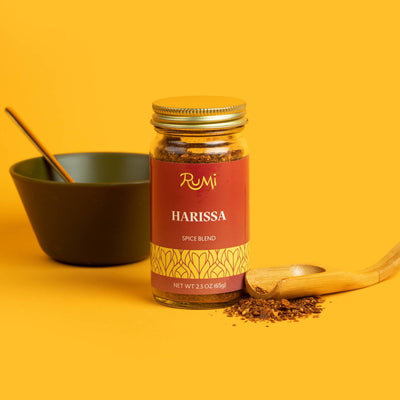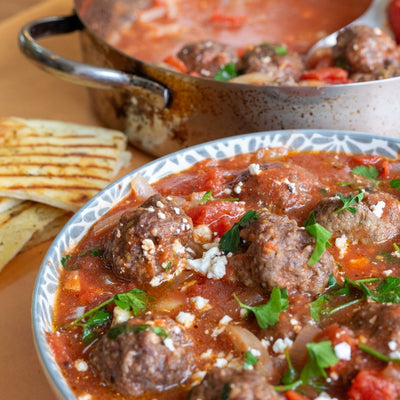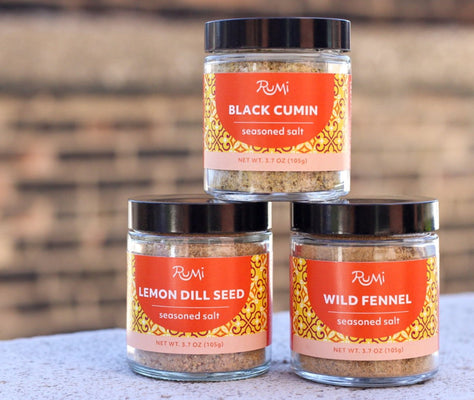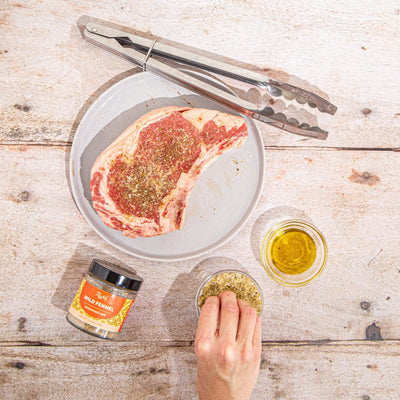Rumi Spice is proud of our direct-sourced advantage.
All of our premium spices - Cumin, Coriander, Fennel, Dill Seed, and Saffron - are hand-harvested, and direct-sourced from our devoted network of farmers in Afghanistan.
Our direct supply chain allows us to provide the highest-quality spices that are:
- Flavorful & potent
- Non-Irradiated
- Unadulterated
By direct sourcing our spices and creating a global supply chain, we can help provide reliable wages and economic stability to the farmers and foragers of Afghanistan.
In Afghanistan, summer marks the beginning of a long harvest season.
We chatted with the head of our farmer network, Shakoor, to share a bit more about this year's spice harvest and what makes these Afghan spice unique.
For more about our mission, click here.
________________________________________________________________
Rumi: What spices do you harvest in the summer months?
Shakoor: Most of the spices we harvest for Rumi are grown in different provinces in 2 different seasons - one in the summer and one in the fall. During the summer months, the main spices harvested are coriander, fennel, dill seed, fenugreek, and chervil. Saffron is harvested in the fall.
Rumi: During what months does the harvest take place and why is this time of year the best time to harvest these spices?
Shakoor: The exact harvest time for these spices, as with all crops, depends on the weather and temperature, so the dates for the harvest range from late spring through the end of the summer (May, June, July, and August are the most common months for harvesting these spices). A temperate range of 20-40 C degrees (68 - 104 degrees F) is most suitable for harvesting since that is when the spices are the ripest.
Rumi: Where, specifically, are each of these spices harvested? What is the terrain like?
Shakoor: Wild black cumin is grown in the wild foothills of the Hindu Kush mountain range. That spice is grown naturally, on untouched land with no human intrusion. This mountainous area is what gives black cumin its earthy, sharp flavor, setting it apart from “traditional” cumin you may be familiar with.
These other summer spices (coriander, fennel, and dill seed) are grown in groomed, agricultural land and the harvest takes place in that same land. All of our spices are grown organically with no fertilizers or pesticides.
Rumi: What about Afghanistan’s land and climate makes it a good place to harvest these spices? What makes the spices that grow in Afghanistan unique?
Shakoor: With varieties of terrain & elevation (mountains, hills, and flatlands) in a relatively small geographic area, Afghanistan is known to produce the most natural spices with the best quality. The variation of climate in this region is another reason why Afghanistan produces some of the most pungent, strong, high-quality spices. Because of the vast amount of fertile, relatively untouched terrain in this region, many variations of spices can grow wild, resulting in these high-quality, potent & aromatic spices.
Rumi: What are some typical Afghan dishes that incorporate these spices? How does your family cook with these spices at home?
Shakoor: In Afghanistan, these spices are used in many of our main dishes. The spices are commonly used in rice dishes, both with and without meat. The dishes in Afghanistan get their unique, special flavor from these spices. Our food would not be the same without these spices. We also commonly mix coriander with salt, pepper, dill seed, and fennel for the most delicious spice blend, used on all types of food. We also combine ground cumin and ground coriander and use that as a spice on meat, rice and vegetable dishes.
Rumi: How did the climate this year impact the spice harvest?
Shakoor: For the last 2 years, there was a drought here that hugely affected the crops for all our spices, specifically those for dry farming, like cumin. The humidity decreased and the crops did not ripen properly. The losses were large which directly impacted the livelihoods of the farmers and nomads.
Rumi: How many tons of Cumin, Coriander, and Dill seed were harvested during this year’s summer harvest?
Shakoor: This year, we harvested more than 300 tons of black cumin seeds, 5,000 tons of coriander, 2,500 tons of fennel, 1,000 tons of dill seeds and more than 10,000 tons of caraway.
Rumi: What happens after the summer harvest? Are your farmers already preparing for the saffron harvest in the fall?
Shakoor: Mostly, the farmers here are busy with different types of crops and spices. The ones who harvested for coriander and fennel are now doing the wheat harvesting. A few of the farmers are busy preparing new land for saffron cropping. The saffron harvest will begin in October.
Learn more about the 2020 saffron harvest here.
We can't wait to report back after the Saffron harvest in October. In the meantime, we hope you continue to cook up delicious dishes with our beautiful spices. Enjoy!









